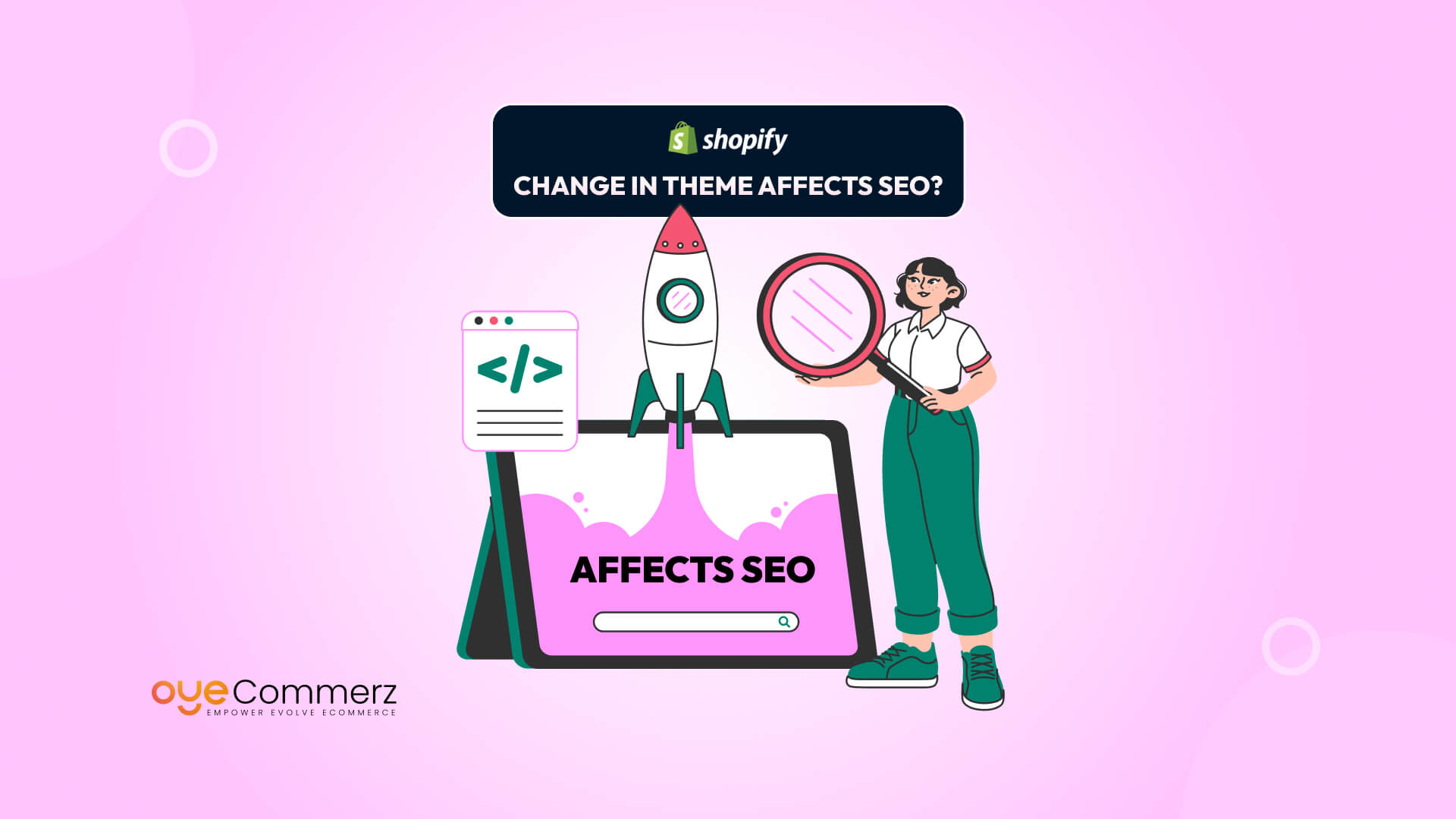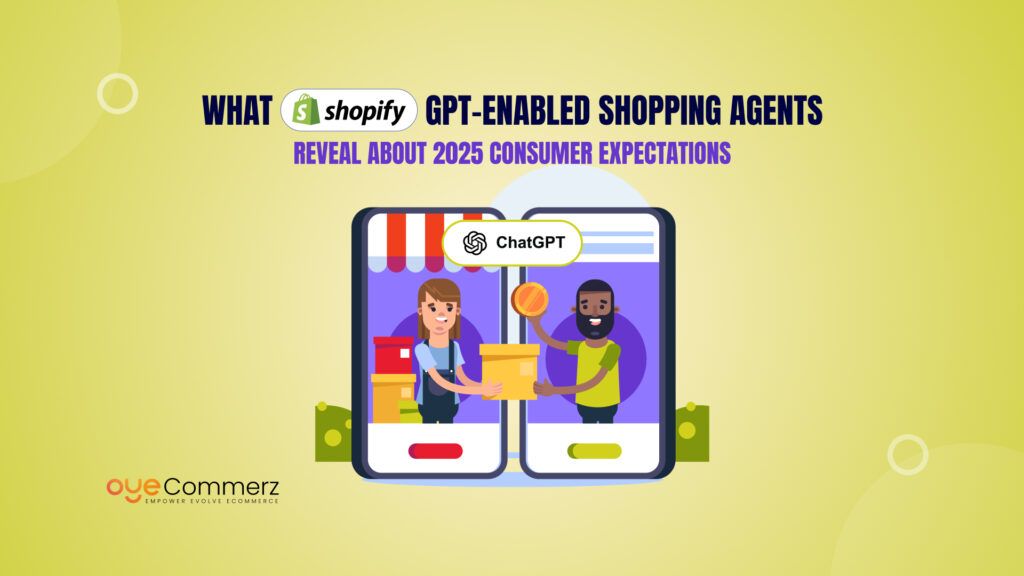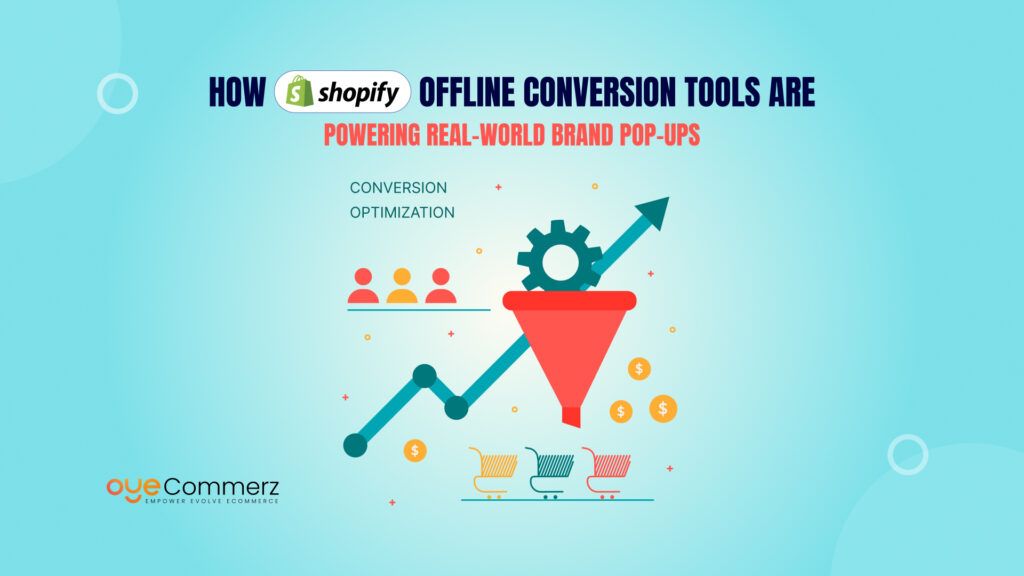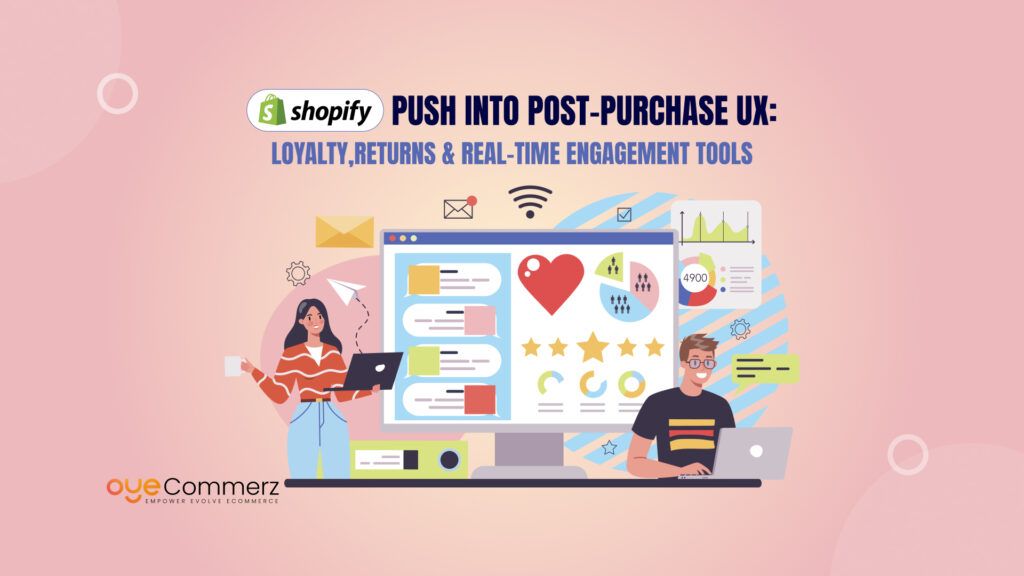Thinking about starting an online business but not sure where to begin? You’re in the right place.
With eCommerce booming, there’s never been a better time to launch your own store. And when it comes to choosing a platform, Shopify is the go-to choice for both beginners and growing brands. It’s easy to use, packed with features, and built to scale as your business grows.
In this guide, we’ll show you how to sell on Shopify from setting up your store to building a profitable online business. Let’s get started.
Table of Contents
ToggleWhy Choose Shopify to Start Your Online Business
Starting an online business can feel overwhelming but Shopify is designed to make the process easy, efficient, and scalable. Whether you’re a first-time seller or a seasoned entrepreneur, here’s why Shopify is one of the best platforms to build and grow your eCommerce brand.
1. Easy-to-Use Interface No Coding Required
One of Shopify’s biggest advantages is its user-friendly design. You don’t need to be a web developer to build a professional-looking store. With drag-and-drop customization, pre-designed themes, and simple navigation, you can set up your storefront, add products, and launch in just a few hours even if it’s your first time building a website.
2. Scalable for Businesses of All Sizes
Shopify is perfect for starting small, but it doesn’t limit you as you grow. Whether you’re selling one product or thousands, the platform offers features that evolve with your business. From Shopify Basic to Shopify Plus (for enterprises), you can upgrade plans, access more advanced tools, and handle larger volumes without switching platforms.
3. All-in-One Commerce Solution
Shopify isn’t just a website builder it’s a complete eCommerce toolkit. It includes:
- Integrated payment gateways (Shopify Payments, PayPal, Stripe, etc.)
- Automated shipping and tax settings
- Marketing tools like discount codes, email marketing apps, and SEO settings
- Sales channel integrations with Facebook, Instagram, Amazon, and Google Shopping
Everything you need to run your business is available in one place, saving you time and avoiding the hassle of managing multiple systems.
4. Real Success Stories You Can Learn From
Shopify powers over 4 million online stores worldwide including successful brands like Gymshark, Allbirds, and ColourPop. But beyond the big names, countless small businesses have gone from side hustles to full-time incomes using Shopify. The platform offers a thriving ecosystem of support, from blogs and forums to expert partners, making it easier to learn and grow.
Getting Started: Setting Up Your Shopify Store
Launching your Shopify store is a straightforward process, but doing it right from the beginning sets the stage for long-term success. Here’s a step-by-step guide to help you get up and running.
1. Sign Up and Choose the Right Plan
Start by visiting Shopify.com and signing up for a free trial (usually 3 days, sometimes longer with offers). This gives you a chance to explore the platform before committing.
Once your trial ends, Shopify offers several pricing tiers:
- Basic Shopify – For new businesses with essential features
- Shopify – For growing businesses needing more tools and staff accounts
- Advanced Shopify – For scaling businesses needing advanced reporting and shipping
Choose the plan that matches your current needs but remember, you can upgrade anytime.
2. Choose a Niche and Product to Sell
Before adding anything to your store, decide what you’re going to sell and who you’re selling to.
Identify a Profitable Niche:
Look for niches that:
- Solve a specific problem or fulfill a clear desire
- Have consistent demand
- Aren’t overly saturated with competition
Examples: eco-friendly home goods, pet accessories, fitness apparel, or digital planners.
Do Market Research:
- Use tools like Google Trends, TikTok, or Amazon Best Sellers to spot trends
- Analyze competitors check their product pricing, customer reviews, and marketing
- Survey your audience or community to find what they need
A strong niche = better targeting, easier branding, and higher conversion rates.
3. Set Up Your Store
Once you know what to sell, it’s time to build your storefront.
1. Choose a Domain Name:
Your domain is your store’s web address. Shopify lets you buy one directly from your dashboard or connect an existing domain. Pick something:
- Short and memorable
- Relevant to your niche
- Easy to spell and type
2. Select and Customize a Shopify Theme:
Shopify offers free and paid themes. Choose one that fits your brand vibe and product type. Customize:
- Logo and brand colors
- Fonts and layout
- Homepage sections, banners, and calls-to-action
3. Add Products and Write Compelling Descriptions:
Upload high-quality images and videos. Write descriptions that:
- Highlight benefits, not just features
- Use simple, persuasive language
- Answer common customer questions
- Include keywords for SEO
4. Set Up Collections and Categories:
Collections help organize your products (e.g., “New Arrivals,” “Men’s Footwear,” “On Sale”). It makes browsing easier for your customers and boosts the user experience.
4. Configure Essential Settings
Before going live, set up your store’s foundation.
1. Payments:
Enable Shopify Payments to accept credit cards directly. You can also activate other gateways like:
- PayPal
- Stripe
- Apple Pay
- Buy Now, Pay Later options
2. Shipping:
- Define shipping zones (local, domestic, international)
- Set shipping rates (free, flat rate, weight-based)
- Add shipping carriers or third-party logistics if needed
3. Taxes and Legal Policies:
Shopify can auto-calculate taxes based on your location. Also, make sure your store includes:
- Privacy Policy
- Return & Refund Policy
- Terms of Service
You can generate templates using Shopify’s built-in policy generator.
Optimizing Your Shopify Store for Conversions
Getting traffic to your Shopify store is only half the battle turning visitors into paying customers is where the real success begins. Here’s how to optimize your store for better conversion rates and a seamless shopping experience.
1. Use High-Quality Product Photography and Descriptions
Product Photography Tips:
- Use natural lighting and neutral backgrounds to keep the focus on the product.
- Include multiple angles and zoomed-in shots to highlight details.
- Show products in use (lifestyle shots) to help customers visualize ownership.
- Ensure images are optimized for the web to avoid slow loading times.
Product Descriptions That Sell:
- Lead with the benefits, then explain the features.
- Use short paragraphs, bullet points, and clear formatting.
- Address common customer questions (e.g., size, materials, how it works).
- Include keywords naturally to boost search visibility.
2. Design a User-Friendly Homepage
Your homepage sets the first impression make it count.
Key Elements to Include:
- Clear navigation menu (organized by collections or product types)
- Hero banner with a strong value proposition or current offer
- Featured collections or bestsellers section
- Customer testimonials or reviews
- Call-to-action buttons (e.g., “Shop Now”, “View Collection”)
Keep it clean, focused, and aligned with your brand. Avoid clutter and unnecessary distractions.
3. Make Your Store Mobile-Responsive
Over 70% of eCommerce traffic now comes from mobile devices. If your store isn’t mobile-friendly, you’re losing sales.
Tips to ensure mobile responsiveness:
- Use a Shopify theme optimized for mobile
- Keep buttons and menus easy to tap
- Minimize pop-ups that interfere with browsing
- Test every page on multiple devices before launching
Speed and usability are key; your store should load quickly and navigate smoothly on all screen sizes.
4. Build Trust with Your Visitors
Trust plays a major role in whether a visitor feels confident enough to buy. Add trust-building elements throughout your store:
Trust Signals to Include:
- Customer reviews and ratings on product pages
- Security badges (SSL certificate, secure checkout icons)
- Money-back guarantee or easy return policy
- Contact information and about page to show legitimacy
- Social proof (e.g., “5,000+ customers served”, user-generated content)
Even small trust cues can reduce hesitation and encourage purchases especially for first-time buyers.
Driving Traffic to Your Store
Once your Shopify store is live, the next big challenge is getting people to visit it. Without traffic, even the best-designed store can’t make sales. Here are the most effective ways to bring in quality visitors organically and through paid channels.
1. Organic Marketing
Organic traffic is traffic you earn without paying for ads. While it may take time to build, it’s one of the most sustainable and cost-effective ways to grow your business.
1. Blogging & SEO (Search Engine Optimization)
- Create helpful blog posts that target keywords your potential customers are searching for (e.g., “how to style ankle boots,” “best gifts for dog lovers”).
- Optimize product titles, meta descriptions, and image alt texts with relevant keywords.
- Build backlinks by guest posting, getting listed in directories, or partnering with other blogs.
This helps your store rank higher on Google, bringing in traffic long after the content is published.
2. Email Marketing Strategies
- Use popups or sign-up forms to build your email list from day one.
- Send welcome emails, new product announcements, promotions, and abandoned cart reminders.
- Use platforms like Shopify Email, Klaviyo, or Omnisend to automate campaigns and personalize content.
Email marketing is powerful for turning casual visitors into loyal customers.
3. Building an Audience on Social Media
- Choose platforms where your target audience hangs out (Instagram, TikTok, Pinterest, etc.).
- Share behind-the-scenes content, product demos, user-generated content, and customer reviews.
- Use relevant hashtags, reels, and trends to expand reach organically.
Consistency is key engage with your followers and be authentic.
2. Paid Advertising
Paid ads offer instant traffic and are great for scaling fast especially when your organic reach is still growing.
1. Facebook & Instagram Ads
- Use Meta Ads Manager to create targeted campaigns based on interests, demographics, and behaviors.
- Test different ad formats like carousel ads, video ads, and collection ads.
- Start with retargeting (showing ads to visitors who didn’t purchase) for higher ROI.
2. Google Shopping & Search Ads
- List your products in Google Shopping so they show up when people search for items similar to yours.
- Run Search Ads targeting commercial-intent keywords (e.g., “buy handmade candles online”).
Paid ads can be cost-effective when optimized correctly start small, test, and scale what works.
3. Influencer & Affiliate Marketing
Tapping into other people’s audiences is a powerful way to grow trust and reach new buyers.
1. Collaborate with Influencers
- Identify micro or niche influencers who align with your brand.
- Offer free products, commission, or flat fees in exchange for promotion.
- Track performance using custom discount codes or affiliate links.
Influencers bring credibility and access to warm audiences ready to buy.
2. Set Up Shopify’s Affiliate App
- Use apps like UpPromote, Refersion, or GoAffPro to launch your own affiliate program.
- Give affiliates a unique link or code to promote your store and earn commissions on sales they refer.
- This model rewards performance and scales your reach without upfront costs.
Bringing the right traffic to your store is a blend of strategy, consistency, and testing. The more targeted your traffic, the higher your chances of converting visitors into loyal customers.
Managing and Fulfilling Orders Efficiently
Once your Shopify store starts receiving orders, efficient order management becomes crucial. Timely fulfillment, accurate shipping, and clear communication help you build trust and encourage repeat purchases. Let’s explore how to handle fulfillment like a pro.
1. Choose the Right Fulfillment Model
Before fulfilling your first order, you need to decide how you’ll deliver products to your customers. Here are the three most common models:
1. Dropshipping
- You only forward the order to a supplier who ships directly to the customer.
- No inventory needed lower risk and startup costs.
- Ideal for beginners or businesses testing new products.
2. Print-on-Demand
- Great for custom apparel, mugs, phone cases, etc.
- A third-party prints and ships items once an order is placed.
- Tools like Printful or Printify integrate easily with Shopify.
3. Holding Inventory
- You manage stock yourself or use a fulfillment center.
- Higher upfront investment but more control over packaging, delivery speed, and product quality.
- Ideal for brands with custom products or established sales volume.
2. Use Fulfillment Apps (for Dropshipping)
If you’re going with dropshipping, automation is key to streamlining operations.
Popular Apps Include:
- DSers (formerly Oberlo): Connects your store to suppliers on AliExpress and automates order placement.
- Zendrop or CJdropshipping: Offer faster shipping times and branded packaging.
- Spocket: Offers US and EU-based suppliers for faster local delivery.
These apps can auto-sync inventory, update tracking numbers, and even push new products to your store with one click.
3. Automate Order Fulfillment and Shipping Updates
Regardless of your fulfillment model, automation saves time and reduces human error.
What You Can Automate in Shopify:
- Order confirmation emails and shipping notifications
- Label printing and tracking through apps like ShipStation, Pirate Ship, or Shopify Shipping
- Inventory syncing with your supplier or warehouse
- Abandoned cart recovery emails to bring back potential buyers
Automation tools ensure customers stay informed and reduce support requests, helping you focus more on growth and less on operations.
An efficient order management system not only improves customer satisfaction but also sets the foundation for scaling your business with confidence.
Analyzing Store Performance and Scaling
To build a truly profitable online business, you need to go beyond setting up and selling; you must track, analyze, and optimize. This section covers how to measure success, improve marketing efficiency, and scale your operations strategically.
1. Set Up Analytics for Data-Driven Decisions
Understanding what’s working (and what’s not) starts with proper tracking.
1. Shopify Analytics
- Comes built-in with all plans.
- Track sales, traffic sources, returning customer rates, average order value (AOV), and more.
- Use the Live View to monitor real-time activity in your store.
2. Google Analytics (GA4)
- Offers deeper insights into user behavior, page views, bounce rates, and conversions.
- Set up eCommerce tracking to analyze product performance and customer paths.
- Combine it with Google Tag Manager for advanced tracking.
Proper analytics setup gives you a clear view of your store’s performance and helps you make informed growth decisions.
2. Track Key Performance Indicators (KPIs)
Here are some essential metrics every Shopify store owner should monitor:
- Conversion Rate (CR):
The percentage of visitors who make a purchase. Industry average is around 2–3%. Improve this with better UX, faster checkout, and trust signals. - Average Order Value (AOV):
Total revenue divided by the number of orders. Boost it through upselling, bundling, or offering free shipping thresholds. - Return on Ad Spend (ROAS):
Revenue generated per dollar spent on ads. If you’re spending $100 on Facebook Ads and making $300 in sales, your ROAS is 3.0 (300%).
These KPIs help you assess profitability and marketing effectiveness.
3. Use Growth Tactics to Boost Revenue
Once the basics are in place, focus on strategies to grow your average customer value and sales frequency.
1. Upselling & Cross-Selling
- Recommend higher-end or complementary products on product and cart pages.
- Use apps like ReConvert, Bold Upsell, or Frequently Bought Together.
2. Email Remarketing
- Send abandoned cart reminders to recover lost sales.
- Set up win-back campaigns for past customers.
- Offer personalized product recommendations based on browsing history.
Email remarketing helps increase repeat purchases and customer lifetime value (CLTV).
4. Know When to Hire Help
Scaling requires delegation. You don’t have to do it all yourself.
Consider hiring:
- Virtual Assistant (VA): for order processing, customer service, or data entry.
- Marketing Expert: for Facebook Ads, SEO, or email automation.
- Shopify Developer: for custom features, speed optimization, or theme tweaks.
Investing in skilled help frees up your time and allows you to focus on business strategy and growth.
With solid analytics, actionable insights, and smart scaling tactics, you can transition your Shopify store from a side hustle to a thriving eCommerce brand.
Common Mistakes to Avoid as a Shopify Seller
Even with a great product and a well-designed store, success on Shopify isn’t guaranteed. Many new store owners fall into avoidable traps that cost them time, money, and momentum. Here are some of the most common mistakes and how to sidestep them.
1. Overcomplicating the Website
Simplicity sells. A cluttered, confusing website frustrates visitors and leads to high bounce rates.
Avoid:
- Using too many apps that slow down site speed
- Overwhelming your homepage with too many banners or product categories
- Complicated checkout processes
Do instead:
- Stick to a clean, intuitive layout
- Prioritize navigation and mobile responsiveness
- Keep the buyer journey smooth from homepage to checkout
2. Ignoring Customer Feedback
Customer feedback is one of your most valuable resources for improvement and growth.
Avoid:
- Deleting or ignoring negative reviews
- Failing to follow up with unsatisfied customers
- Skipping post-purchase surveys
Do instead:
- Encourage reviews and testimonials
- Use feedback to fix issues or improve product offerings
- Monitor support tickets and social media comments to identify trends
Listening to your customers can help you build a better brand and improve retention.
3. Not Investing in Marketing Early
Many store owners build a beautiful Shopify site and expect traffic to flow in automatically. It won’t.
Avoid:
- Launching with no marketing plan
- Relying only on organic reach in the early stages
- Ignoring the importance of building an email list or social media presence
Do instead:
- Allocate a budget for ads (even small test campaigns)
- Start content marketing or influencer outreach early
- Leverage email marketing and remarketing from day one
Marketing is an ongoing process not a one-time launch activity.
4. Underpricing Products or Ignoring Shipping Costs
Trying to undercut competitors with low prices can backfire especially if you haven’t factored in all your costs.
Avoid:
- Setting prices too low to attract buyers but cutting into profits
- Forgetting to include packaging, transaction fees, or shipping costs in your pricing
- Offering free shipping without adjusting product margins
Do instead:
- Use pricing calculators to factor in all costs and target profit margins
- Offer free shipping strategically (e.g., for orders above a threshold)
- Test price points to find a balance between value and profit
Tools and Apps to Supercharge Your Shopify Store
One of Shopify’s biggest strengths is its powerful app ecosystem. Whether you’re looking to improve marketing, streamline operations, or boost conversions, the right tools can save you time and significantly grow your revenue.
Here are essential categories and recommended apps for different areas of your store:
Marketing Tools
These apps help you attract, engage, and retain customers through automated and targeted campaigns.
1. Klaviyo
- Email & SMS marketing automation
- Powerful segmentation and personalization
- Pre-built flows for welcome series, abandoned carts, and post-purchase follow-ups
2. Privy
- All-in-one conversion tool
- Pop Ups, banners, and email capture forms
- Great for growing your list and boosting sales with exit-intent offers
Product Reviews & Social Proof
Reviews build trust and can increase conversions significantly. These apps make it easy to collect and showcase them.
1. Loox
- Photo reviews with star ratings
- Automatically emails customers for reviews post-purchase
- Beautiful, customizable widgets
2. Yotpo
- Review collection and display
- Loyalty and referral features included
- Integrates with Google Shopping for better ad performance
Store Optimization & Analytics
Track how users interact with your store and identify ways to improve speed and experience.
1. Hotjar
- Heatmaps, session recordings, and on-site surveys
- Understand where users drop off or get confused
- Use insights to improve layout and increase conversions
2. PageSpeed Optimizer
- Helps boost store loading speed
- Improves SEO and mobile performance
- One-click install and setup for beginners
Inventory & Fulfillment
Streamline your operations so you can focus on growth instead of logistics.
1. ShipStation
- Multi-channel shipping software
- Prints labels, manages orders, and syncs with multiple carriers
- Ideal for stores fulfilling orders in-house
2. DSers (for Dropshipping)
- Official AliExpress dropshipping partner
- Replaces Oberlo, with faster order processing and bulk ordering
- Automates supplier syncing, tracking numbers, and product updates
Bonus Tools to Explore:
- ReConvert – for post-purchase upsells
- Tidio – live chat and chatbot support
- Judge.me – lightweight and budget-friendly review tool
- Bundler – create product bundles and quantity discounts
Ready to Sell on Shopify?
Building a successful online store doesn’t have to be overwhelming. Whether you’re starting fresh or looking to scale, Oyecommerz is here to help you set up, optimize, and grow your Shopify business with confidence.
From professional store setup and theme customization to marketing integration and growth strategies we handle the heavy lifting so you can focus on running your business.
Book a Free Consultation Now and take the first step toward a profitable Shopify journey.
Let's build your custom Shopify app today!
Conclusion
Starting and growing a successful Shopify store is a journey that combines strategy, persistence, and adaptability. From choosing a profitable niche and setting up a visually appealing store to driving targeted traffic and optimizing for conversions each step plays a crucial role in building a profitable online business. By streamlining your order fulfillment, analyzing store performance through tools like Shopify Analytics and Google Analytics, and implementing marketing techniques like email remarketing, upselling, and paid ads, you position your brand for sustainable growth.
Most importantly, remember that success on Shopify isn’t about getting everything perfect from day one. It’s about starting, learning from real customer feedback, testing new ideas, and consistently improving. Stay focused, stay curious, and be willing to adapt. With the right mindset and tools, your Shopify store has the potential to grow into a thriving online business.
Frequently Asked Questions
Shopify offers multiple pricing plans:
Basic: $39/month – suitable for new businesses
Shopify: $105/month – ideal for growing stores
Advanced: $399/month – best for scaling operations
Each plan includes hosting, SSL, abandoned cart recovery, and essential eCommerce features. Transaction fees may apply unless using Shopify Payments.
Yes, Shopify is one of the most user-friendly and scalable eCommerce platforms available. It offers a wide range of tools, integrations, themes, and apps to help you build, market, and grow your online business all without needing to code. Many entrepreneurs find the platform well worth the cost due to its ease of use and growth potential.
Shopify offers a 3-day free trial with access to most features. After the trial, you’ll need to choose a paid plan to keep your store live. There are no hidden setup fees, but you may incur costs for apps, premium themes, and third-party services as your store grows.
To start selling on Shopify, you need:
A product or service to sell
A Shopify account and a chosen pricing plan
A domain name (can be purchased through Shopify or connected externally)
Basic business details (store name, email, payment method)
You don’t need to be a developer—Shopify handles the tech so you can focus on your business.
Yes, but it depends on the payment gateway you use:
Shopify Payments: No transaction fees, only credit card processing fees (e.g., 2.9% + 30¢ for Basic plan).
Third-party gateways (like PayPal, Stripe): Shopify charges an additional transaction fee (starting at 2.0% for Basic) on top of the gateway’s fee.
Using Shopify Payments minimizes your total transaction costs.




